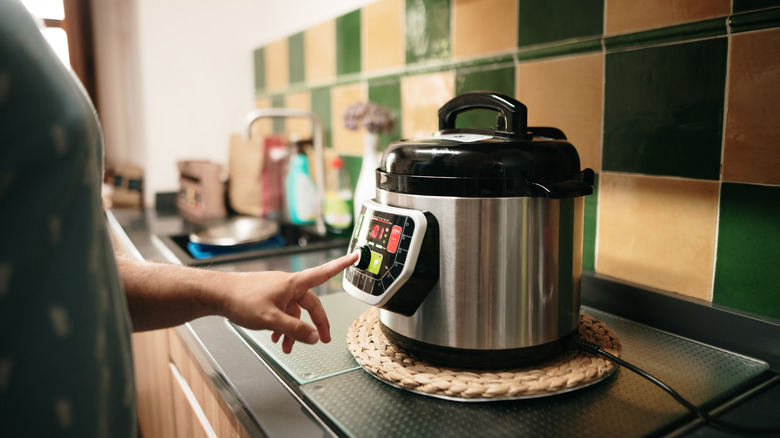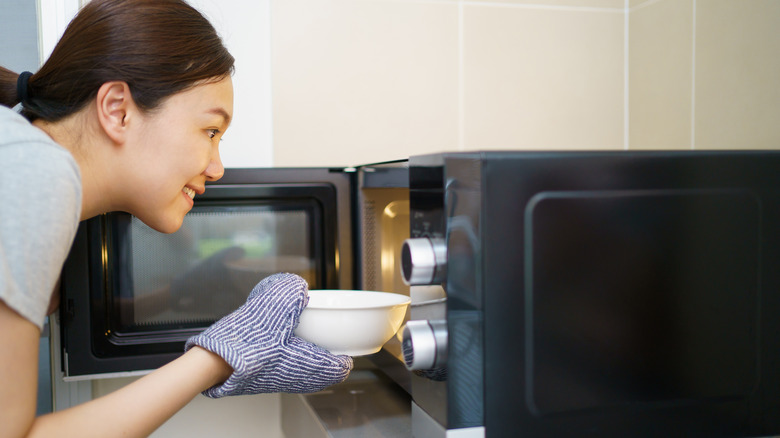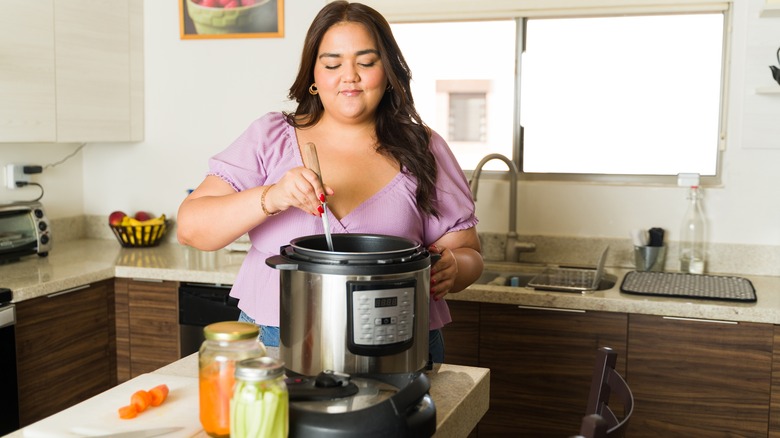Why The USDA Advises Against Reheating Food In Your Slow Cooker
When it comes to appliances, slow cookers are certainly very useful in the kitchen. However, they can prove a bit problematic when it comes to preparing leftovers. That's why the USDA recommends avoiding the appliance if you're looking for a convenient reheating method for last night's dinner. It's all a matter of internal temperatures and cooking times, which can lead to serious concerns about food safety should you use a slow cooker for the task.
As explained by the USDA, bacterial growth is most likely to occur within a certain temperature range, which has been dubbed the Danger Zone. Because slow cookers work slowly (it's right there in the name, after all), food is likely to remain between 40 and 140 F for an extended period. The longer food remains in this Danger Zone of temperatures, the greater the risk of foodborne illness. However, that doesn't mean you must completely swear off slow cookers for warming food. You just need to take an extra step to help you avoid an upset stomach and other ill effects.
Always use safe practices when reheating leftovers
Per USDA recommendations, slow cookers can be used to keep reheated food warm before serving, but the actual reheating must take place in another cooking appliance. In this case, you should use a microwave, stovetop burner, or oven for reheating. No matter what kitchen appliance you use, remember that leftovers must reach an internal temperature of 165 F before they can be transferred to the slow cooker. Additionally, it's important to ensure that food within a slow cooker maintains a consistent temperature of 140 F.
The best way to accurately evaluate the temperature is by using a food thermometer, otherwise you're merely making a guess. When using a thermometer to determine internal temperatures, be sure to insert the pointed probe into the thickest part of the food. Also, steer clear of areas containing gristle and bones, as they can prevent the thermometer from capturing the true internal temperature of meat, whether it's steak, chicken, or pork. In addition to using careful reheating procedures, there are some other best practices associated with slow cookers to keep in mind.
More crucial safety tips for slow cookers
Much like you must exercise caution with pre-cooked food and slow cookers, you must also be careful when it comes to raw ingredients. While it's tempting to take frozen foods and put them directly into slow cookers, doing so can pose similar risks as using the appliance to reheat foods. Instead, you must first thaw foods before placing them into the slow cooker to avoid the dreaded Danger Zone temperature range. According to the USDA, frozen items must be thawed in cold water, in the refrigerator, or in the microwave to ensure safety.
Once foods are thawed, it's best to start the slow cooking process as soon as possible. Leaving food exposed to room temperature conditions for too long can result in the growth of harmful bacteria. As stated by the USDA, foods left in temperatures higher than 40 F for two or more hours are unsafe to eat. That means you must be mindful when using timers on slow cookers to ensure expedience when it comes to ingredients. With the right practices, your slow cooker can offer a combination of convenience and safety.


